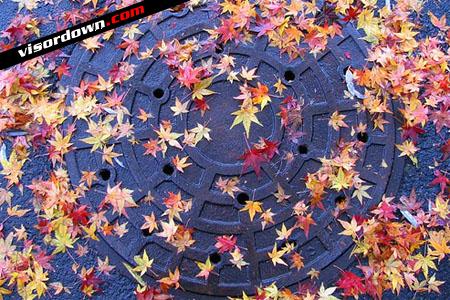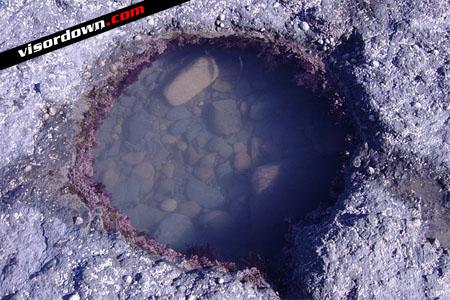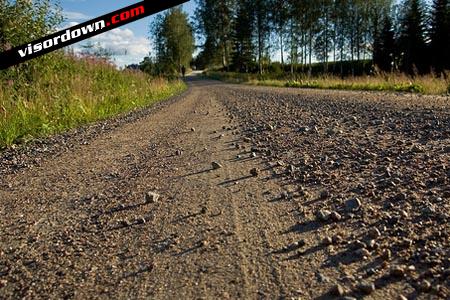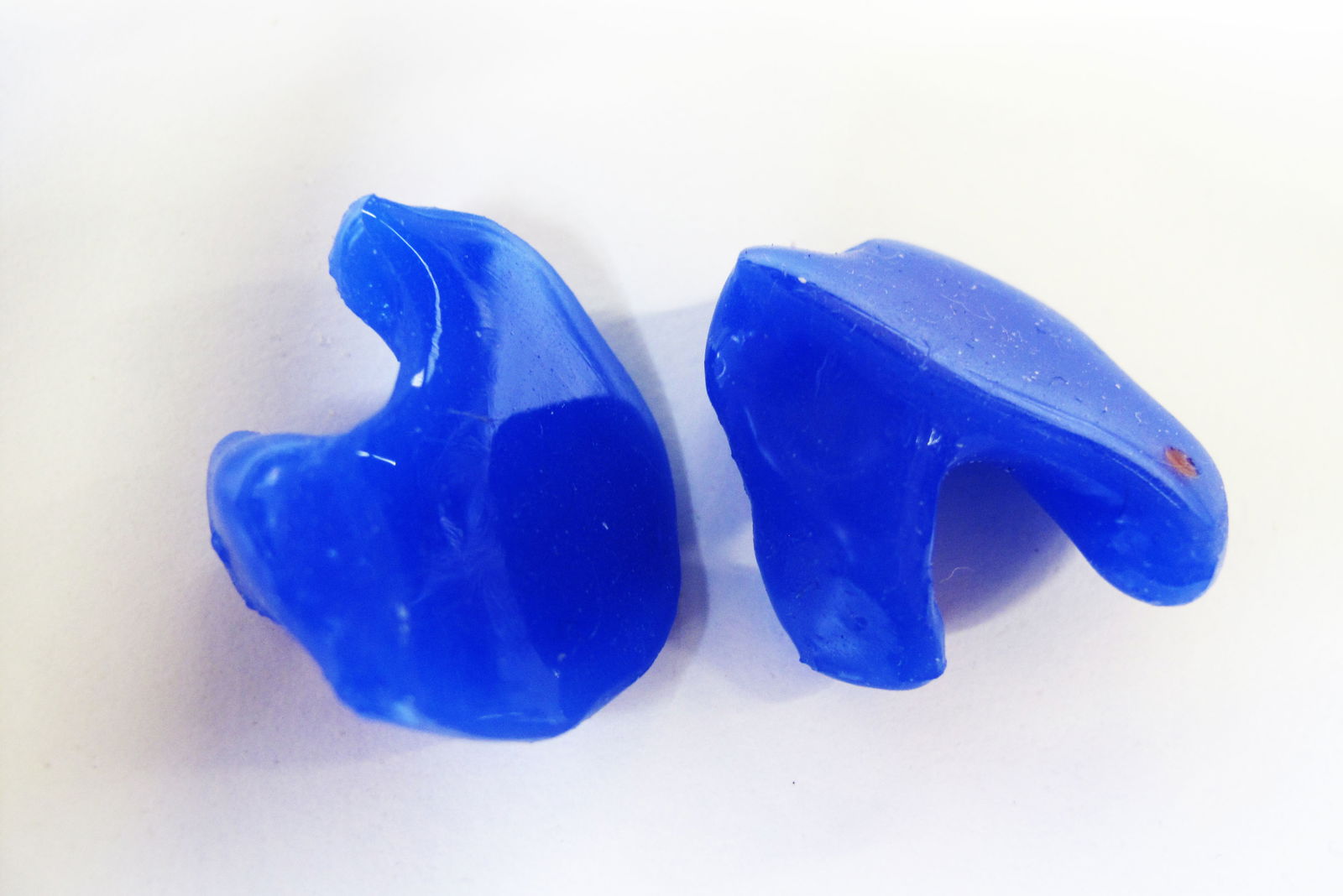Learn to ride with Visordown: Road surface
Why bikers need to keep an extra eye on the road surface ahead


You'll get away with this in a car but not on a bike
EVERY MOTORCYCLIST, whether they're a new rider or not, should be keeping an eye on the road surface when they're out on their bikes.
Greasy roads, wet leaves and loose gravel may not seem much of a problem for most car drivers, but they all pose serious threats to those of us on two wheels. Lose traction with one or even two wheels in a car and you could be in for a heart stopping moment, do it on a bike and you're likely to take a tumble. So here are a few simple pointers to remember when you're next out and about:
Be smooth
When you're on any slippery road surface it's vital that you're as gentle as possible with the bike's controls. Avoid harsh acceleration, cornering and braking and when you do need to slow, use as little front brake as possible.

Diesel on a wet road...get familiar with the smell
Diesel
HGV lorries have a reputation for overfilling their tanks and dumping diesel onto tight bends and roundabouts, making the road a real danger. Even worse, the spillage is often hard to see; it's only when it's been raining that the tell-tale rainbow coloured pattern can be seen. Spillages can often be smelt before they're seen, so make a point getting familiar with diesel's pungent aroma the next time you're at a petrol station. If you are riding along and realise you're riding on diesel, relax, don't brake and slowly move off the diesel. Lose speed without braking and when you need to brake, gently apply braking force. If you're entering a roudnabout with a visible diesel slick, avoid going onto the diesel, minimise your angle of lean and accelerate gently when leaving the roundabout.

A manhole covered in wet leaves...aaaarrrghhh!
Wet leaves
Now autumn's around the corner the roads will soon be strewn with dead leaves, especially at the roadside, and they're as slippery as ice when they're wet. Keep your eyes peeled and take extra care when there are trees overhanging the road.
Cold roads
When the ambient temperature's low, the road's surface remains cold throughout the entire day, which means your tyres stand little chance of warming up to the optimum operating temperature, especially if you're only covering short distances. This will have a big effect on the tyre's grip when accelerating, cornering and braking.
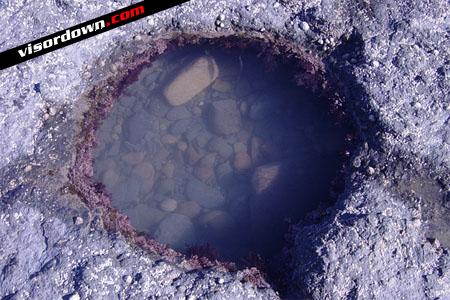
Imagine that lurking under a puddle
Pot holes
A small pool of standing water may look like it wouldn't cause you a problem but what's lurking underneath? A four-wheeled vehicle can soak up big ruts with little problem but hitting a pothole on a bike can have disastrous consequences. So avoid riding through small or large puddles as they could be concealing a hidden danger and your bike could end up aquaplaning too.
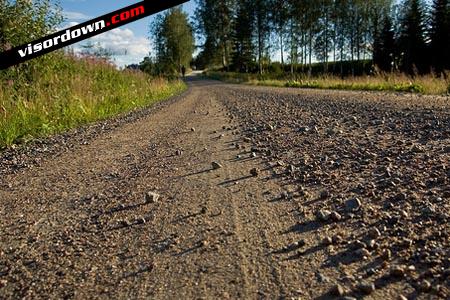
Avoid braking, accelerating or turning on loose surfaces
Gravel
Gravel's horrible stuff. It lurks at junctions, on bends and in gutters waiting to catch out two-wheelers as they trundle along. Treat it like ice by avoiding braking accelerating or leaning the motorcycle. If you must slow down then use engine braking or the rear anchor.

Like this outside? Leave the bike at home
Ice and snow
This one's simple. If it's snowing or there's ice on the road then leave the bike at home. It's just not worth taking the risk.
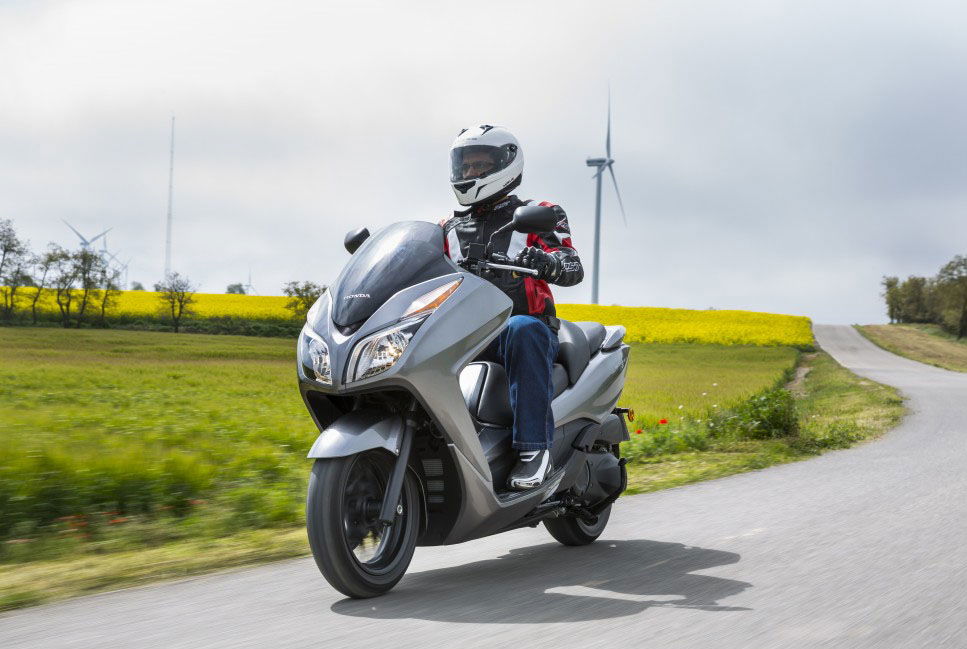
EVERY MOTORCYCLIST, whether they're a new rider or not, should be keeping an eye on the road surface when they're out on their bikes.
This article was originally published in September 2007 and updated in July 2013.
Greasy roads, wet leaves and loose gravel may not seem much of a problem for most car drivers, but they all pose serious threats to those of us on two wheels. Lose traction with one or even two wheels in a car and you could be in for a heart stopping moment, do it on a bike and you're likely to take a tumble. So here are a few simple pointers to remember when you're next out and about.
Be smooth
When you're on any slippery road surface it's vital that you're as gentle as possible with the bike's controls. Avoid harsh acceleration, cornering and braking and when you do need to slow, use as little front brake as possible.
Diesel
HGV lorries have a reputation for overfilling their tanks and dumping diesel onto tight bends and roundabouts, making the road a real danger. Even worse, the spillage is often hard to see; it's only when it's been raining that the tell-tale rainbow coloured pattern can be seen. Spillages can often be smelt before they're seen, so make a point getting familiar with diesel's pungent aroma the next time you're at a petrol station. If you are riding along and realise you're riding on diesel, relax, don't brake and slowly move off the diesel. Lose speed without braking and when you need to brake, gently apply braking force. If you're entering a roudnabout with a visible diesel slick, avoid going onto the diesel, minimise your angle of lean and accelerate gently when leaving the roundabout.
Wet leaves
Autumn's not a million miles away and the roads will soon be strewn with dead leaves, especially at the roadside. They're as slippery as ice when they're wet. Keep your eyes peeled and take extra care when there are trees overhanging the road.
Cold roads
When the ambient temperature's low, the road's surface remains cold throughout the entire day, which means your tyres stand little chance of warming up to the optimum operating temperature, especially if you're only covering short distances. This will have a big effect on the tyre's grip when accelerating, cornering and braking.
Pot holes
A small pool of standing water may look like it wouldn't cause you a problem but what's lurking underneath? A four-wheeled vehicle can soak up big ruts with little problem but hitting a pothole on a bike can have disastrous consequences. So avoid riding through small or large puddles as they could be concealing a hidden danger and your bike could end up aquaplaning too.
Gravel
Gravel's horrible stuff. It lurks at junctions, on bends and in gutters waiting to catch out two-wheelers as they trundle along. Treat it like ice by avoiding braking accelerating or leaning the motorcycle. If you must slow down then use engine braking or the rear anchor.
Ice and snow
This one's simple. If it's snowing or there's ice on the road then leave the bike at home. It's just not worth taking the risk.

